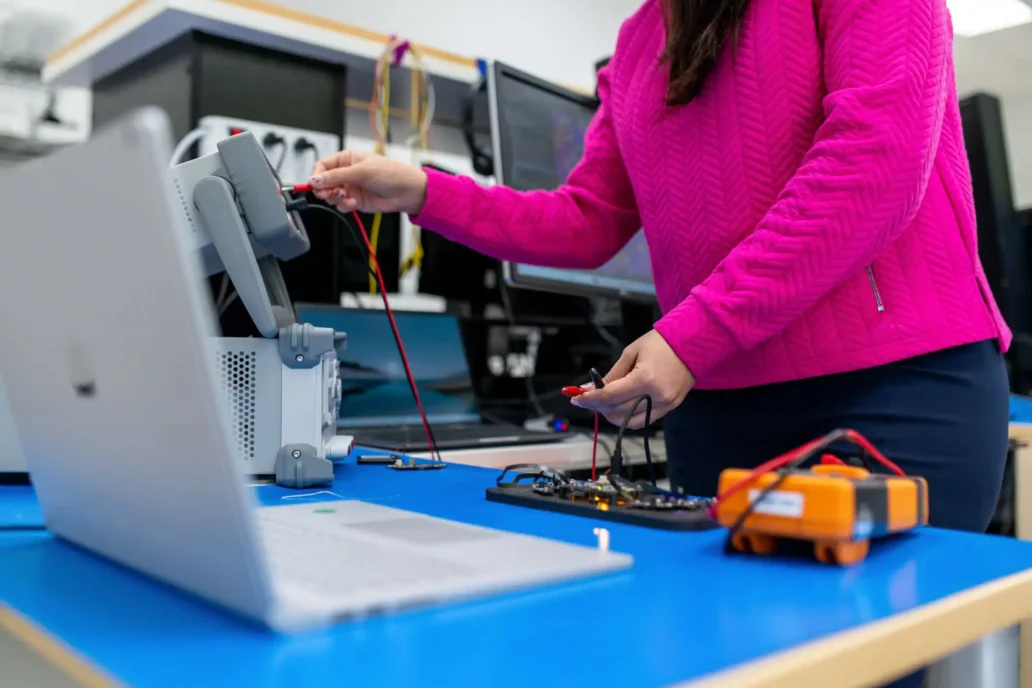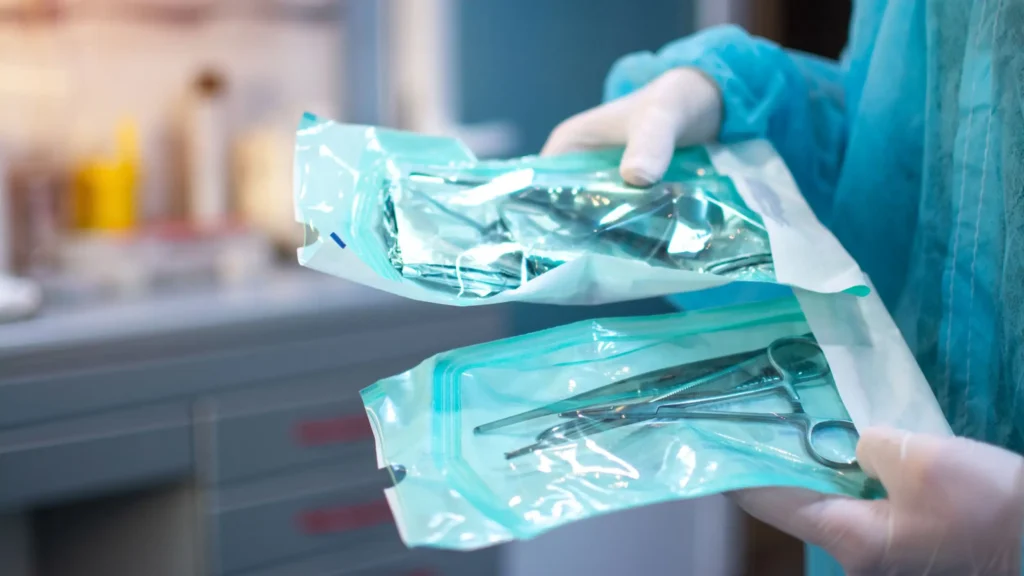
Precision Power Design in Medical Devices
TL;DR
- Power stability is mission-critical for medical devices.
- Precision power design prevents data drift and sensor error.
- Non-ratiometric sensors need absolute voltage accuracy.
- Control noise, EMI, and temperature drift for reliability.
- Real-world testing validates performance under stress.
For many medical devices, power stability isn’t just a nice-to-have, it’s mission-critical.
Even small voltage fluctuations can introduce errors in sensor readings, degrade signal quality, or create misleading data that ripple through the entire system.
Many of the most sensitive components in medical devices, such as analog front ends, sensors, and data converters (ADCs/DACs), are highly dependent on the quality of their power supply.
This is especially true for non-ratiometric sensors that rely on absolute power rail accuracy to maintain measurement integrity. If the supply voltage drifts, their outputs become untrustworthy, regardless of how well the rest of the signal chain is designed.
The situation is even more complex in wearable or portable medical devices, where temperature, humidity, and size constraints make power design both more challenging and more critical. In these environments, precision power design can mean the difference between a robust device and one that fails unpredictably.
Why Precision Power Design Matters in Medical Devices
At the core of any accurate medical measurement lies a clean, stable, and low-noise power supply.
A poorly regulated supply can inject ripple or noise into the analog signal path, distort sensor outputs, or reduce the resolution of an ADC. Even small power deviations can result in cascading errors, particularly when measuring weak biopotential signals.
Medical devices are often deployed in electrically noisy environments, hospitals filled with high-frequency switching equipment, or homes with unknown EM conditions. In wearables, the environment is even more unpredictable: rapid movement, temperature shifts, and varying load conditions all conspire to stress power delivery systems.
Sensor-First: A Bottom-Up Power Design Strategy
One of the most effective ways to approach power supply design is to start at the sensor and work backwards.
Questions to consider include:
- What accuracy and stability does your sensor require?
- What is its allowable supply voltage variation?
- What are its noise sensitivity, temperature coefficient, and long-term drift characteristics?
By answering these questions, you can define a target spec for your analog front end and power supply. Often, this process reveals that a simpler or cheaper supply may suffice, or it may justify a high-performance, low-noise regulator.
It’s also important to factor in system-level constraints like:
- Battery life (especially in portable devices)
- EMC immunity
- Safety isolation
- Available board space
This analysis doesn’t need to be perfect at the start. In early prototypes, it’s often better to over design for performance and scale back later, once you can characterize your sensor and signal path in a real-world context.
Key Precision Power Design Considerations
Voltage Stability
Precision analog circuits often require tight voltage tolerances, sometimes better than ±0.01%.
Understand your load conditions: does your supply need to remain stable during power-hungry events like wireless communication or motor actuation?
Design for load regulation and line regulation, particularly under dynamic conditions.
Noise Performance
Power supply ripple and switching noise are notorious for sneaking into sensitive analog domains.
Even ripple in the low millivolt range can reduce the SNR of an ECG signal or shift the baseline of a temperature sensor.
Consider downstream PSRR (Power Supply Rejection Ratio): how well can your amplifiers and ADCs tolerate supply noise over a range of frequencies?
Noise filtering (e.g. RC filters, ferrite beads) can help, but only after choosing a low-noise supply.
Transient Response
How does your supply respond to a sudden change in current demand?
In a wearable, this might be a BLE transmission or activation of a display.
Poor transient response can lead to voltage droop, reset conditions, or analog signal glitches.
Drift & Temperature Effects
Power supplies themselves have temperature coefficients, as ambient temperature changes, so does output voltage.
Long-term drift can change supply voltages by several mV over months or years, potentially pushing a circuit out of spec.
Choose regulators with low temperature coefficients and consider calibration or margining strategies if long-term precision is critical.
Electromagnetic Interference (EMI)
Devices must withstand interference from external sources: cell phones, radios, defibrillators.
They must also avoid interfering with themselves, a high-speed switching converter can inject noise into an adjacent analog front end.
Apply grounding, shielding, and filtering appropriately to isolate sensitive areas.
PCB layout is critical: think in terms of return paths, current loops, and separation of analog/digital domains.
Power Supply Characterization: Validating Your Design
Even after a careful design, testing is essential, especially in medical applications where reliability is paramount.
Test under worst-case conditions:
- Max/min load
- Full temperature range
- Varying input voltages
Use tools like:
- Oscilloscopes with specialized probes for ripple measurement
- Spectrum analyzers to spot unwanted noise or EMI
- Electronic loads to simulate dynamic conditions
Validate performance during:
- Fast switching events
- High CPU load or wireless transmissions
- Environmental stress (e.g. humidity, temperature cycling)
Don’t limit testing to the happy path. Push your design until it breaks, then redesign or margin appropriately.
Conclusion
Precision power design is more than an afterthought, it’s a cornerstone of reliable medical electronics.
From tight voltage regulation and low noise to EMI resilience and long-term stability, your power supply must meet the same high standards as your sensors and signal chains. By starting with a sensor-focused approach and validating your design under real-world conditions, you can build systems that not only pass the lab tests but also perform reliably in unpredictable environments where medical devices are used every day.
By starting with a sensor-focused approach and validating your design under real-world conditions, you can build systems that not only pass the lab tests but also perform reliably in unpredictable environments where medical devices are used every day.
Mike Ganzert is an Electronics Engineer at Starfish Medical. He received his Bachelor’s of Applied Science in Electrical Engineering from UBC Okanagan in 2021, with a focus in medical devices.
Images: Adobe Stock
Related Resource

Most sterile medical devices begin their journey long before anyone thinks about sterilization. Teams focus on function, usability, materials, and suppliers, then discover that sterilization constraints can reshape many of those early decisions.

After years of working with founders and technical teams, I have learned that early design missteps rarely come from engineering flaws. More often than not, they come from missing conversations.

Medtech founders operate with more constraints than most sectors. You are responsible for deep technical problem solving, high-stakes decisions, regulatory navigation, investor conversations, and a constant stream of operational tasks.

Consumer health prediction shapes more of daily life than most people realize. In this episode of Bio Break, Nick and Nigel explore how retail data can reveal health information without a person ever speaking to a clinician.